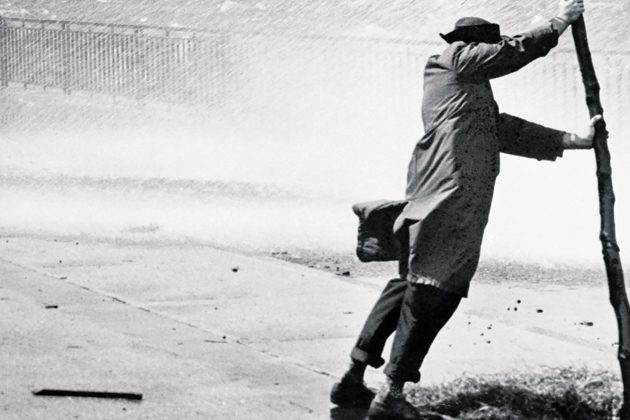This post first appeared on Risk Management Magazine. Read the original article.

Check out more from Risk Management on:
Disaster Preparedness
Disaster Recovery
Natural Catastrophes
Although weather is often unpredictable and always uncontrollable, businesses can go a long way toward mitigating damage with careful preparation. According to a 2018 report by the U.S. Chamber of Commerce and MetLife, however, more than one-third of small businesses have no emergency plans in place for natural disasters or severe weather, and while larger businesses often have business continuity and disaster recovery plans, many of them do not account specifically for weather-related events.
To ensure your organization is prepared, planning for a natural disaster should include the following steps:
- Create internal emergency-response teams and identify the roles of everyone on the team. Specifically highlighting what their roles are during weather-related emergencies will ensure each team member knows what to focus on as the event unfolds. Team members with the right skills and knowledge can then address their areas of expertise, knowing that other issues are covered by people with the appropriate skillset.
- Train key employees on technology to mobilize crisis-response teams, alert staff and suppliers, and account for personnel safety. This preparation enables team members to move quickly when making decisions and share important information with all audiences, no matter how narrow or broad, rather than trying to learn and understand new tools in the midst of managing an event.
- Implement human resources policies for employee notification, remote work and accessibility for people with disabilities for both large and small events. In most cases, basic policies and procedures provide all of the necessary information to keep individuals safe and secure; however, some events are more complex and require giving employees specific instructions in advance.
- Create and distribute shelter-in-place, evacuation and medical emergency procedures informing employees of exactly how to respond or where to go. In many types of severe weather events, there is very little time to make decisions, so having predefined meet-up locations and procedures enables people to respond quickly and confidently.
- Keep a current list of contact information for all employees, response-team personnel, utility companies, Federal Emergency Management Agency (FEMA) officials, the local Red Cross chapter and local first-responder organizations, ensuring the right people are acting on the information that they have the skills and authority to manage.
- Build and maintain off-site support for business continuity so information channels remain open and functioning at all times, such as through a software-as-a-service (SaaS) solution that is not tied to specific hardware or a physical location that could be impacted.
Ensuring Effective Communication
Once these initial steps are complete, organizations should focus on preparing for effective communications before, during and after severe weather events to protect their operational, financial and strategic assets.
Evaluate emergency mass notification systems. When it comes to mitigating the effects of weather events on businesses, employees, customers and suppliers, speed is imperative. This should include the use of an emergency mass notification system (EMNS) to warn and update employees and suppliers about business closings and emergency measures. Some systems can automatically notify employees in advance of severe weather events as soon as the National Weather Service issues a bulletin.
Ensure EMNS can reach users through multiple channels. Effective mass notification systems use multiple methods of communication, such as phone calls, instant messages, desktop alerts, social media posts, mobile apps, SMS and emails. Using different methods of notification, or “multimodal alerting,” helps to ensure that messages can be delivered quickly without human intervention and mitigate single points of failure. Because technologies and methods of communication evolve over time, make sure to choose a vendor that stays up-to-date on how to use all means of communication.
Ensure two-way communications. Your organization’s emergency communication system should be capable of two-way communications to help ensure the safety of personnel and continuity of operations. Decision-makers within organizations need a system that not only can deliver real-time, mission-critical notifications in any message format required, but provide a way for message recipients to respond as well. With two-way notification capability, IT and security administrators can communicate with employees to determine if they are safe and report the results so the emergency response team can keep a running tally of who still needs to be contacted. This is critical during severe weather events when employees scattered across multiple locations may be impacted and must be accounted for.
Ensure geo-targeting based on severe weather track. The ability to target groups of employees, customers or suppliers in specific geographic areas is important, especially in weather-related emergencies where the severity of warnings or expected impact may differ depending on the area. The most effective systems can geographically target only those in the path of the weather event, and can automatically plot contact addresses on a map, allowing administrators to choose specific areas they want included or excluded from an alert.
Conduct periodic testing. Once the policies, procedures and communications technologies are set, they should be tested periodically with different drills for each type of weather event. Then, after the next weather event has taken place, set aside time to assess how effective the response was, and adapt and update your plan accordingly.

